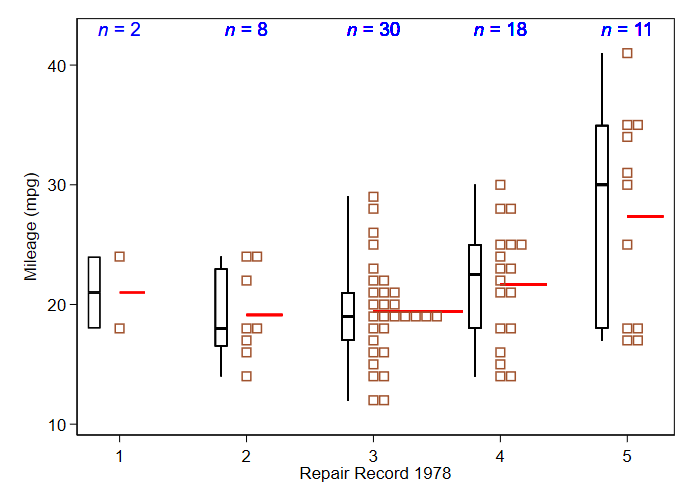Does a style of plot exist that can clearly plot a sample's average, range, and sample size together? I guess I'm thinking of a box plot in which the width might vary in relation to the sample size?
This could be used for the following scenario: You want to plot the average time it takes for 5 employees to finish their tasks over a 6 month period. All employees have tasks assigned and finished within each month, and the number of tasks the employees get assigned each month isn't the same (one might get 2 while another gets 12). The tasks overlap in time and focus, so having 12 tasks will contribute to an employee's average time to finish a task taking longer - so you'd want the average time shown in relation to the number of tasks assigned that month as well as the range of finish times for the month's set of tasks.



varwidthargument to theboxplotfunction inR. $\endgroup$